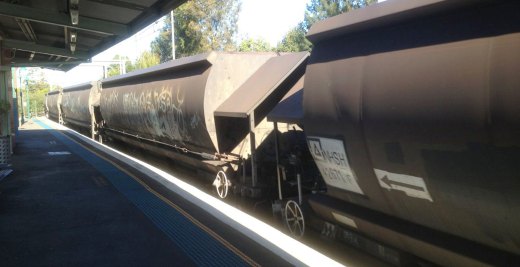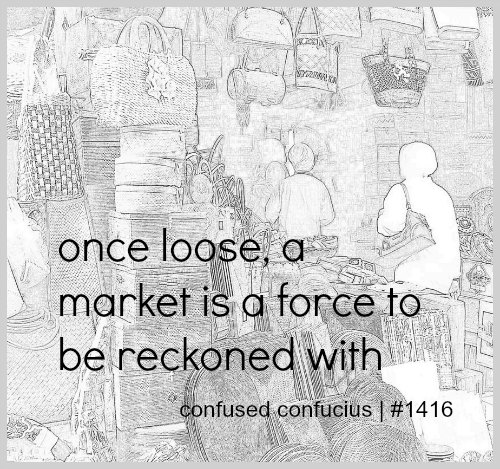Home | About CCW | Contact Us | Climate change Meaning | Causes | Solutions | Emissions | Carbon trading
Carbon credit
A carbon credit is a specified amount of greenhouse gas emissions expressed in tons of carbon dioxide equivalents (tCO2e)that is either
- an emission allowance
- not released to the atmosphere or
- drawn from the atmosphere into plants or soil [biosequestration]
by activities that are additional, that is they would not normally take place under business as usual.
Credits are traded in emissions trading schemes and can be exchanged for permits in cap-and-trade markets.
When my eldest son asked "what is a credit carbon thingy?" it took some explaining...
"The idea," I said, "is that we want to reduce greenhouse gas emissions to the atmosphere."
"Fair enough," he said as though I was being obtuse.
"So the creation of credits is a way to trade in those emissions whilst making it costly to emit."
"So what is a credit?"
"The unit traded."
The glazed over look suggested I needed to start over.
"I'm sorry" I said, "We want to reduce greenhouse gas emissions because we think it will help slow down the rate the earth is warming. Businesses need energy to make, sell and move goods around. It is making energy that burns so much fossil fuel and releases greenhouse gases. Even a bank uses power for heating, lighting and a bunch of computers. Almost all businesses emit greenhouse gases no matter how energy efficient they are because they use energy to make, sell and move goods around."
"OK."
"Over time there is more business activity because there are more and more people all wanting to get on. More business means more emissions if the energy they use comes from fossil fuels. But we want the opposite. We want emission reductions. The only way to keep growth going and reduce emissions is to make energy without releasing greenhouse gases. So we need a shift to clean energy sources and low emission manufacturing."
The youngster was listening although hardly riveted.
"The problem," I said, "is that the cheaper energy comes from the dirtiest sources, notably coal-fired power stations. It is hard for businesses to choose the more expensive option when they are, after all, in business.
"One way to force businesses into using clean energy sources is to make the dirty, or what we call carbon intensive energy, expensive. When energy from coal, oil and gas becomes expensive compared to wind, geo-thermal and wave generated power businesses buy the cheaper power and emissions go down.
"A price can be set as a tax with monies going to government. Alternatively a market mechanism can achieve the same result. A market requires a commodity, something to buy and sell, hence the carbon credit."
I looked across, smiled and pressed on.
"Each ton of emissions above a certain allowed limit requires the company to purchase a carbon credit to offset the emission. Now make the price of a credit high enough and it makes business sense to reduce emission to a minimum such as by shifting to clean energy sources."
There was a long pause. Time enough for the cogs to turn and find the holes in my attempt at a succinct explanation.
"OK," he said. "Did you see the cricket the other night?"
That this exchange was with a second year university student studying for a science degree says a lot about how complex solutions for global warming have become.
The problem is not the reduction of greenhouse gas emissions for we have enough technology to move our energy sources away from fossil fuels.
The problem is that such a shift will be expensive. It will cost money to transition the way we make energy on such a large scale. Any reduction of greenhouse gas emissions without stalling western economies or restricting opportunity for emerging economies is the real challenge because a change to business as usual will come at an economic cost.
And because climate change solutions cost money, then we want to be confident that:
- we get what we pay for
- we can measure credits and be sure that they represent permanent emission reduction because they actually did change behaviour
- there is a robust system for buying and selling credits
- we needed the solution in the first place.

Train carrying coal from mines in NSW to the coast for sea transport to export markets, much of it to China. Who should have to buy the credit for the emissions when this coal is burnt, Australia who mined it or China who burnt it?
Carbon credit conundrum
Carbon credits are a clear unit of measurement — a ton of greenhouse gas in carbon dioxide equivalents.
After more than a decade of working out carbon markets we have robust carbon accounting systems that make the credit real in terms of representing an emission, emission reduction or carbon sequestered as carbon offsets.
We also have a system for buying and selling credits that traded 7.36 billion tCO2e on a market worth $143 billion in 2009.
The conundrum is that even with this mechanism of carbon trading to spread the economic risk and cost of transition to clean energy we need to be sure that we need this solution in the first place.
climate change wisdom › carbon trading › carbon credit

Confused Confucius spurned the monastic life for the world of work, moral conundrums and mobile devices. His sayings, questions and incongruous idioms on the environment and modern life bring delight and bafflement in equal measure... check out more Confused Confucius sayings.
Recent Articles
-
Reducing emissions while looking for solutions...
Nov 01, 15 04:46 PM
I've seen a lot of post's online for ideas on reducing emissions. The one suggestion I have not seen, is the most obvious. There should be a government -
Climate change evidence
Mar 24, 15 06:22 AM
Real climate change evidence has to demonstrate a change in climate. An extra sunny day or a severe storm or a flood is not enough. -
The climate change effect
Feb 19, 15 03:08 AM
What will be the climate change effect? There isn't one, there are many. Perhaps too many for us to understand.

New! Comments
Have your say about what you just read! Leave me a comment in the box below.